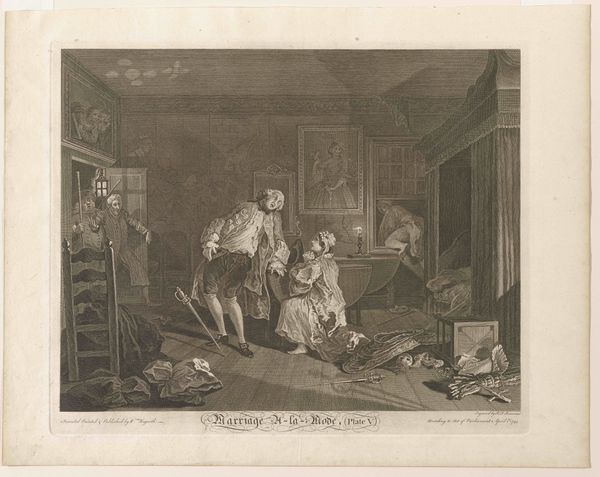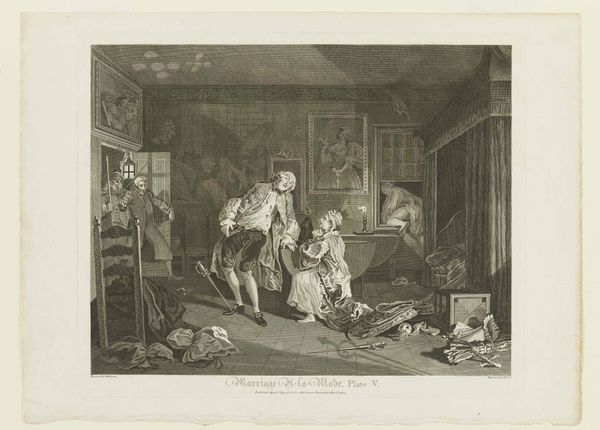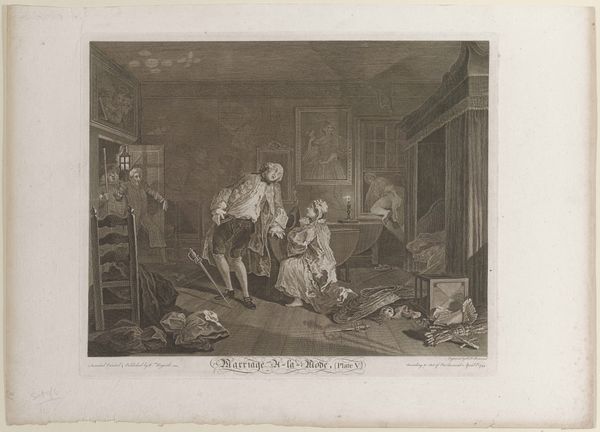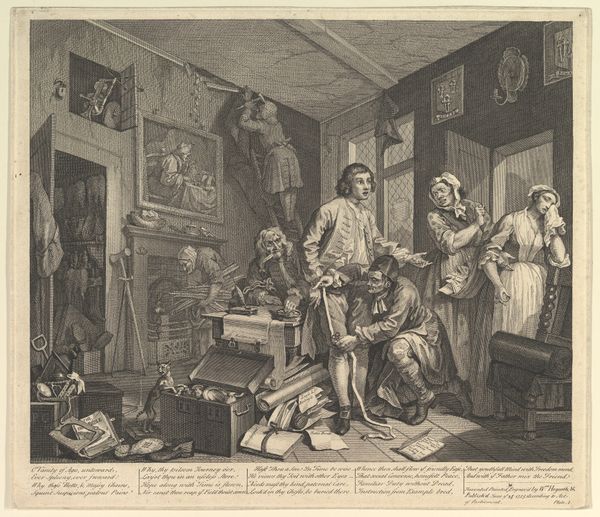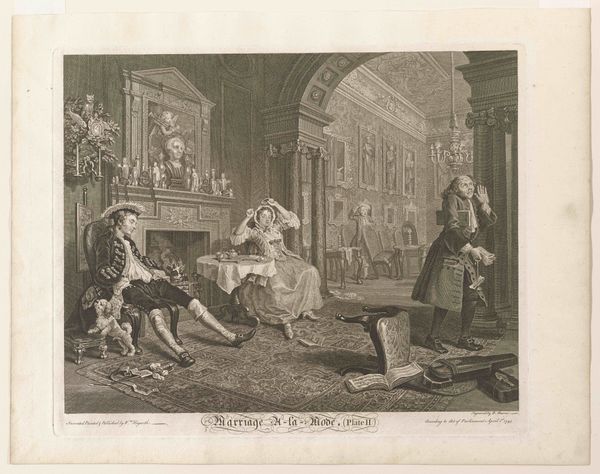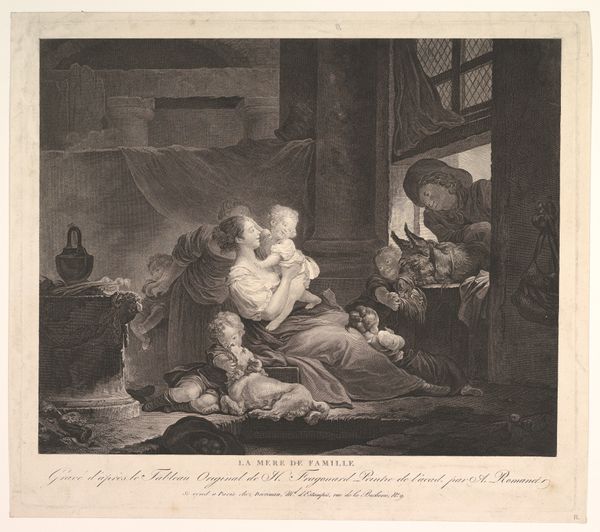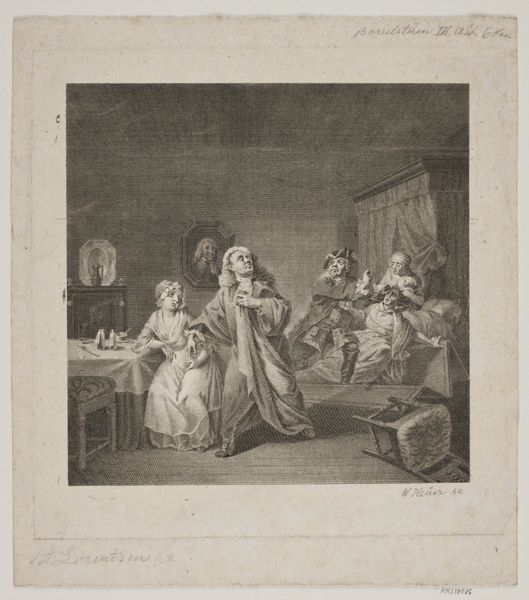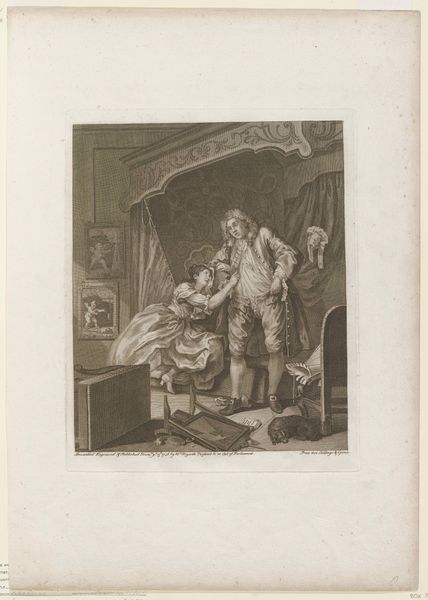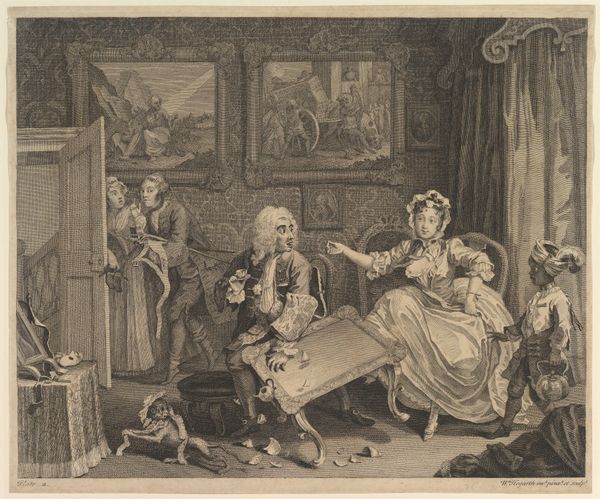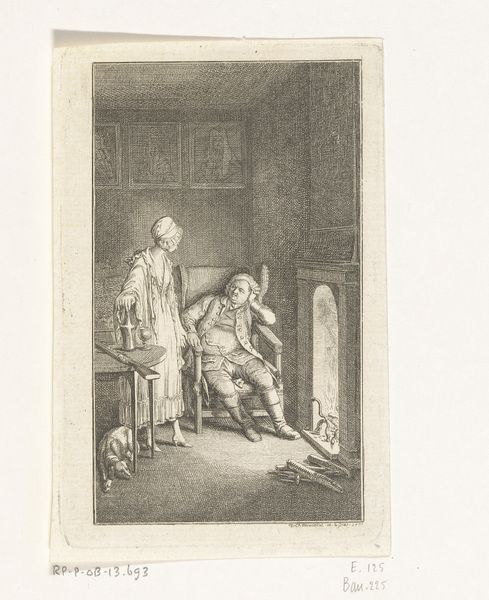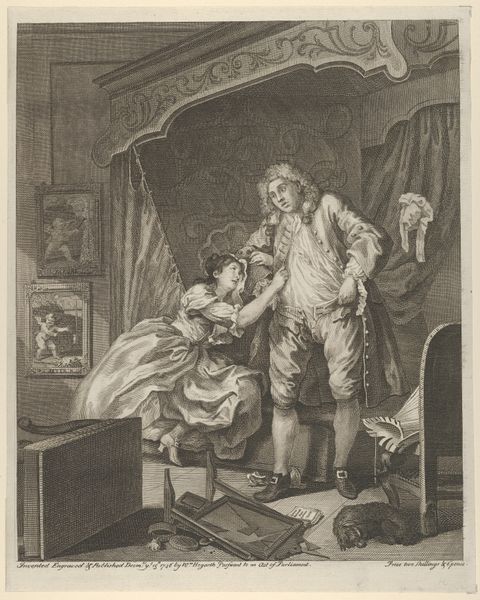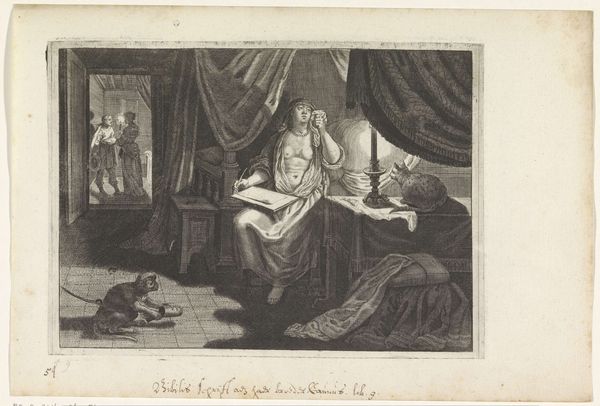
drawing, print, engraving
#
drawing
# print
#
15_18th-century
#
genre-painting
#
history-painting
#
engraving
Dimensions: Sheet: 15 3/16 x 18 3/8 in. (38.6 x 46.7 cm)
Copyright: Public Domain
Curator: This is “Marriage A-la-Mode, Plate V,” an engraving dating back to 1745. It’s the work of Simon Francis Ravenet the elder, after William Hogarth. Editor: It feels incredibly tense, chaotic even. You can practically feel the cold atmosphere despite the elaborate interior. Curator: Absolutely. This piece is part of a series, and here we witness the tragic climax of an arranged marriage gone horribly wrong. These works offer social commentary on the aristocracy and marriage customs of 18th-century England. Editor: I'm drawn to the woman's posture, kneeling in what appears to be supplication, a stark contrast to the exposed man attempting to escape from the window. It’s as if she’s begging forgiveness but the betrayal has already unfolded. There is also a level of shame here for the aristocratic husband because he was wounded. Curator: The narrative details are rich. Consider the intruders bursting in—presumably the husband’s party discovering the illicit encounter. Then we have the painting falling off the wall – a visual metaphor for societal breakdown. Ravenet meticulously conveys Hogarth’s original satire on canvas through this accessible printed format, inviting a broader audience to scrutinize aristocratic society. Editor: I appreciate how the space, though luxuriously appointed, feels incredibly claustrophobic. The crowded composition contributes to the sense of moral suffocation, like a gilded cage closing in. It's compelling how Hogarth critiques societal expectations, positioning the wife and husband as equally trapped victims. And you get the impression it's only because she got caught. Curator: This plate particularly highlights the disastrous consequences of prioritizing social climbing and financial gain over genuine affection in marriage, something that remains relevant today. Hogarth sought to critique societal norms through recognizable visuals. Editor: This engraving allows us to delve into that past, unpacking issues of class, gender, and morality that reverberate even now, in the 21st century. It's like archaeology through art. Curator: Exactly. It encourages reflection not just on historical circumstances, but how those power dynamics persist and evolve within our current cultural landscapes. Editor: An effective way to make us consider what it truly means to feel confined, or trapped.
Comments
No comments
Be the first to comment and join the conversation on the ultimate creative platform.
